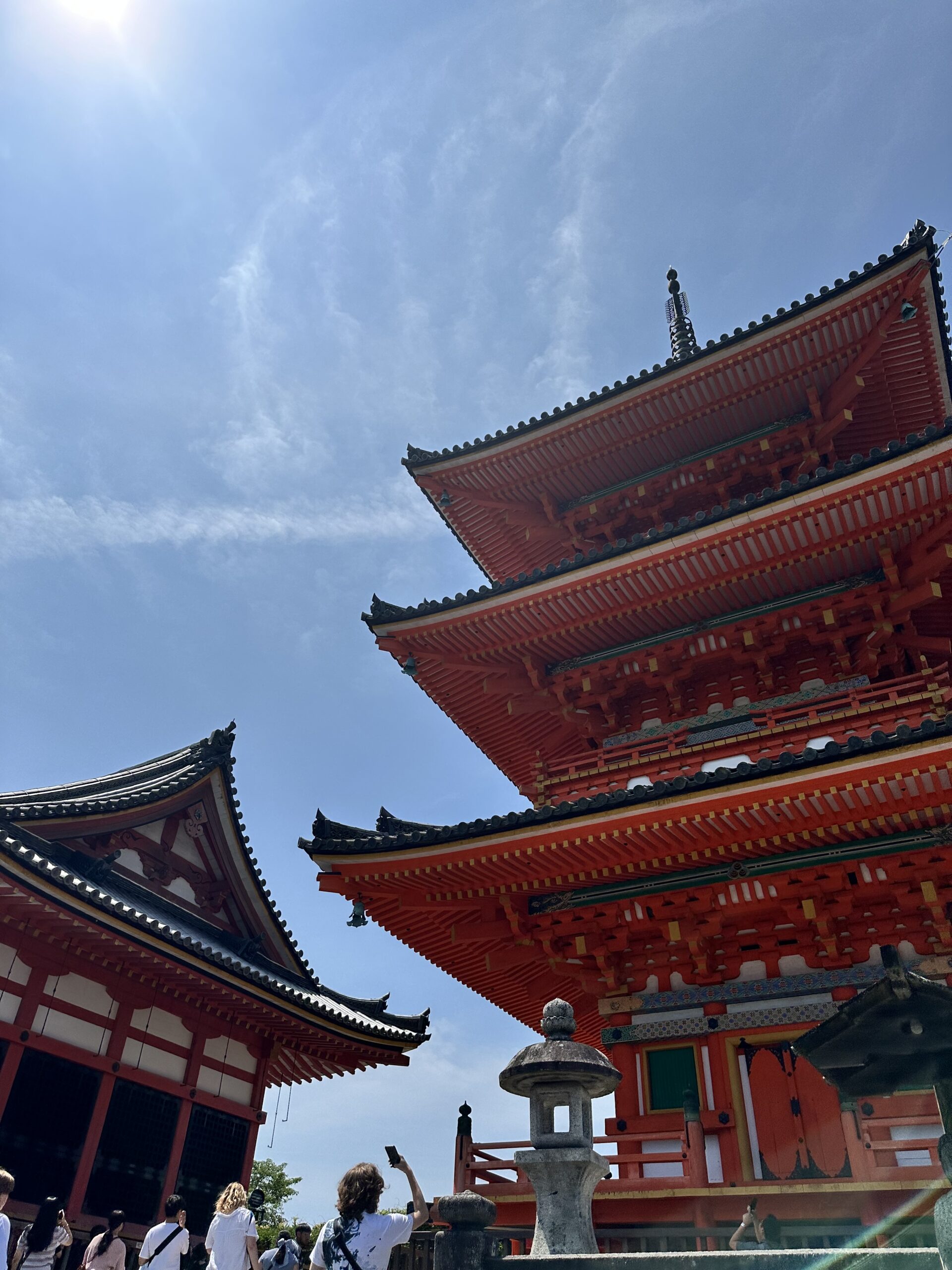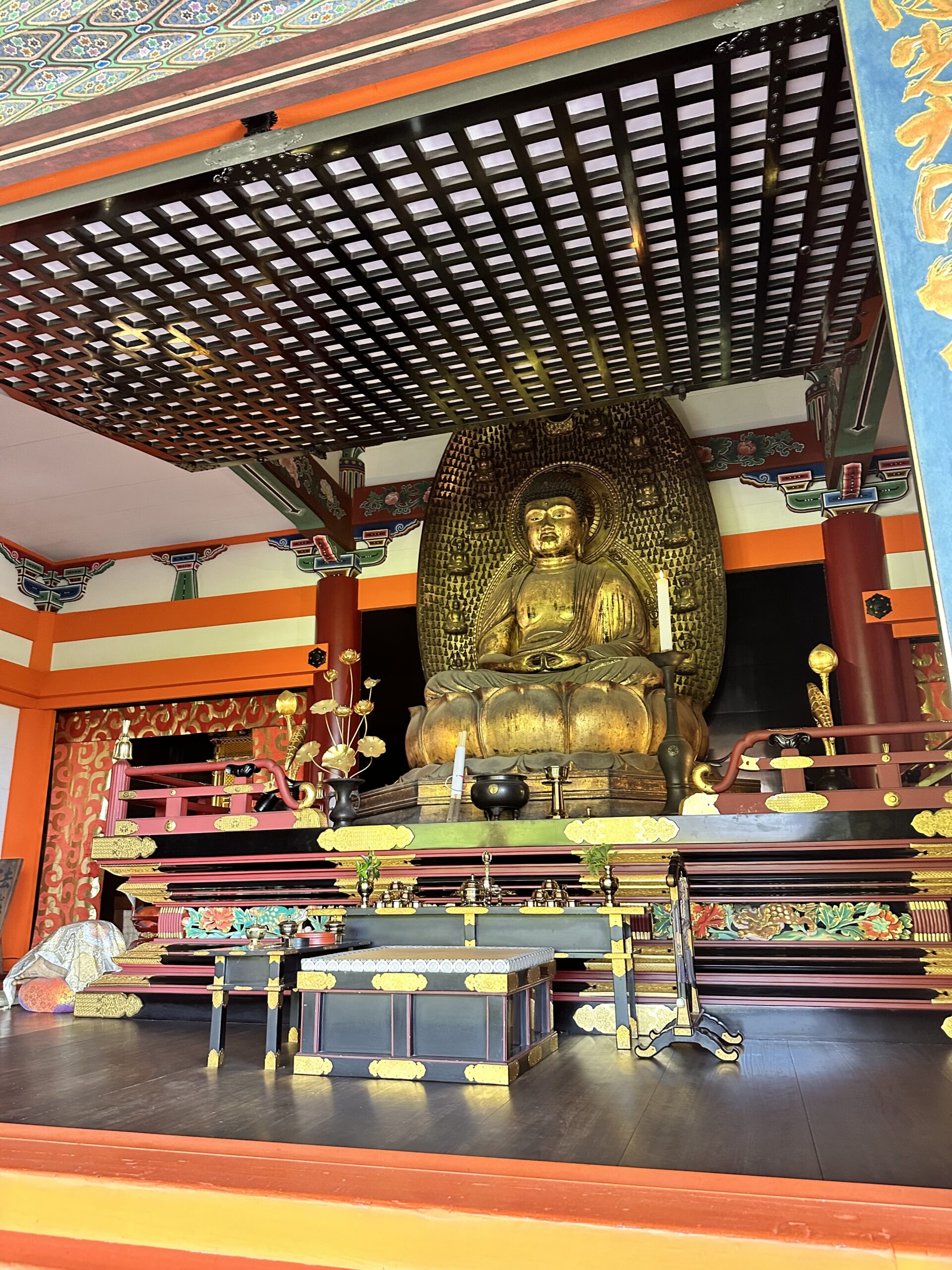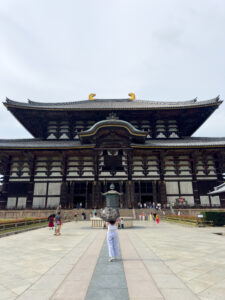
Before learning more about the Shinto and Buddhist religions, partly to my ignorance, I would constantly use the words shrines and temples interchangeably, making me realize the need to learn more about these religions and their religious buildings.
Kyoto, the former capital of Japan, is well known for its deep tradition and rich cultural legacy. It is also home to an astounding variety of religious monuments, with there being approximately 2,000 temples and shrines.
These important monuments and places of worship each have its own distinct architecture, rituals and importance. Gaining insight into the distinctions between these two categories of hallowed sites offers a glimpse into the rich religious fabric of Japan, where these both religions coexist.


One of the first initial distinctions that must be made before diving in deeper is knowing that temples belong to the Buddhist religion, and shrines belong to the Shinto religion. Being that these two religions coexist so closely in the same city and in Japan as a whole it can be easy to get certain things mixed up.
One key similarity both religions have is a process of purification before entering the religious grounds. At temples and shrines, visitors undergo a purification process using water to wash hands and mouths before entering.
While it’s customary in both religions for visitors to wash their hands and mouth upon entering, the intent behind it varies for both religions. The Shinto religion places a strong emphasis on purity and cleansing, whereas the Buddhist religion is generally less about physical cleansing and more about mental and spiritual purification, aimed a preparing visitors for meditation or spiritual practices.
There are also a lot of architectural similarities as well. Something that I initially noticed is that a lot of these buildings have similar colors and tones in their architecture with the color red and a lot of gold throughout. Upon entering both sites, there is usually some type of gate, and for the Shinto religion these gates are called torii. The gates themselves represent the transition into sacred ground. These gates typically can be considered one of the key features in recognizing a Shinto shrine.
In Kyoto, specifically, an iconic display of these gates recognized worldwide is at Fushimi Inari, which is famous for having approximately 10,000 red torii gates winding up Mount Inari. It’s customary to bow on either side of the gate before entering, however, it should be noted that one shouldn’t walk in the middle as the middle part of the gate is reserved for the gods and deities.
Like Shinto shrines, Buddhist temples have main gates called sanmon. The sanmon gate serves as the entrance to the temple grounds and symbolizes the entry into a place of spiritual awakening. However, a key difference and identifying part of these gates is how they are often guarded by statues of fierce deities to ward off evil spirits.
Something that really struck me as a key difference in the architecture of these religious buildings were the pagodas at Buddhist temples. Pagodas are multi-tiered towers that often contain sacred relics and sometimes the ashes of certain families. The tiers themselves symbolize the Buddhist cosmology and the stages of enlightenment. And not just anyone can get inside; only those who are in some way related to those relics.
Besides learning about the similarities and differences of these religious monuments, another thing that really stuck with me about the coexisting of two religions in one place, especially in such close proximity to one another. And honestly, I think it’s such a beautiful thing to see and testament to religious respect that isn’t always seen in other parts of the world even today.
It’s impressive not only the intention in the practices of these religions, but the magnitude of people from around the world who come to pay their respects. In learning about these monuments and getting to witness their traditions is something that truly will stay with me for a lifetime.







